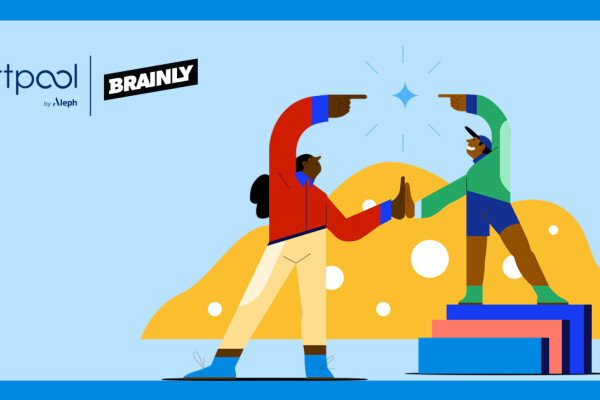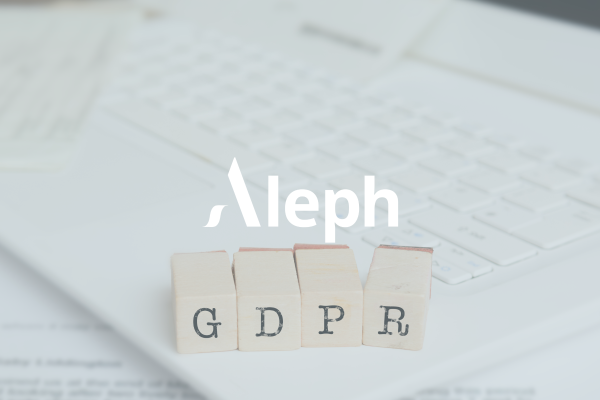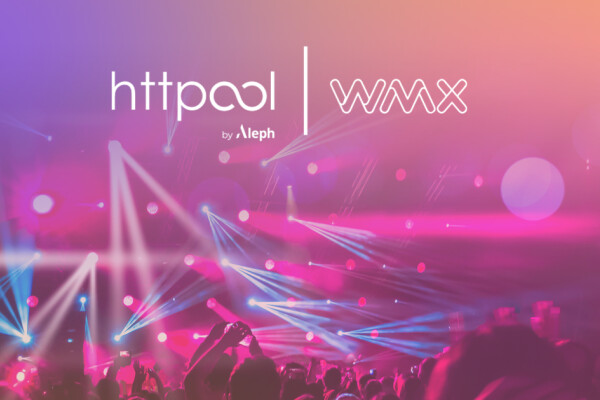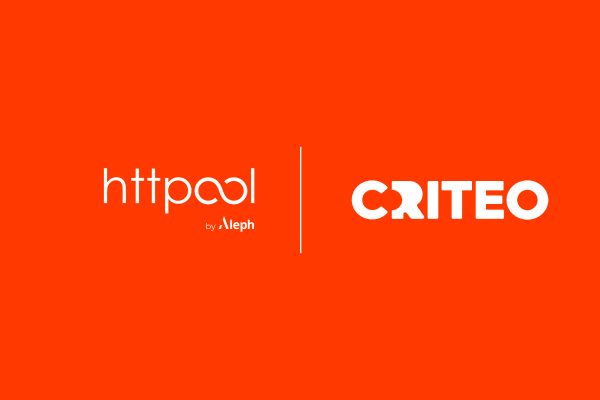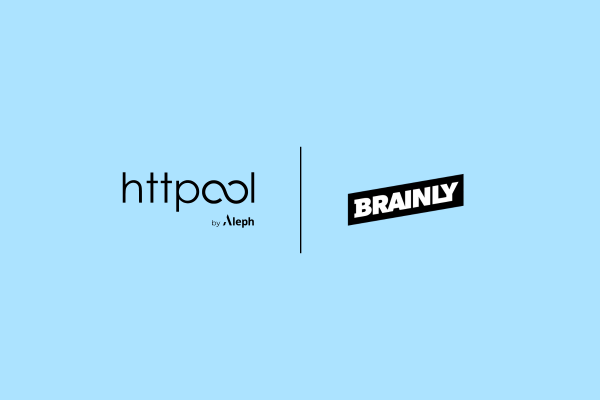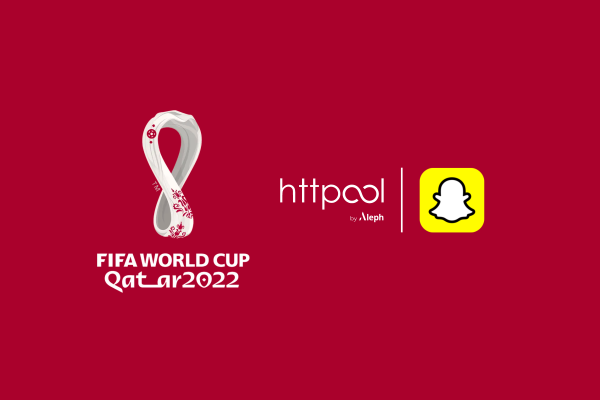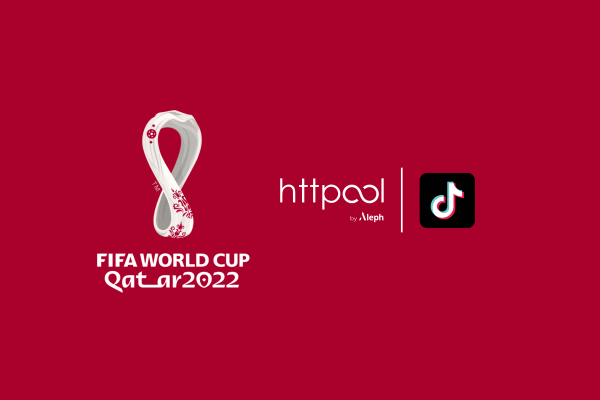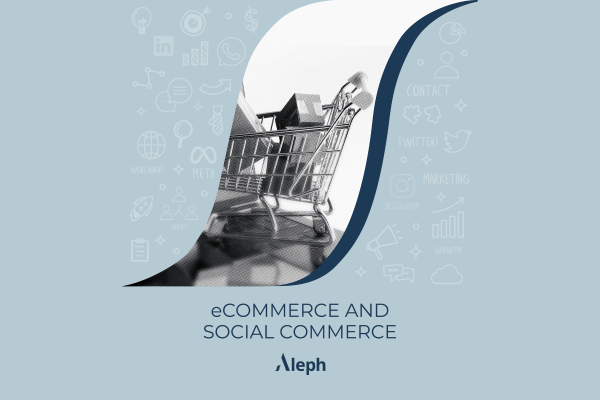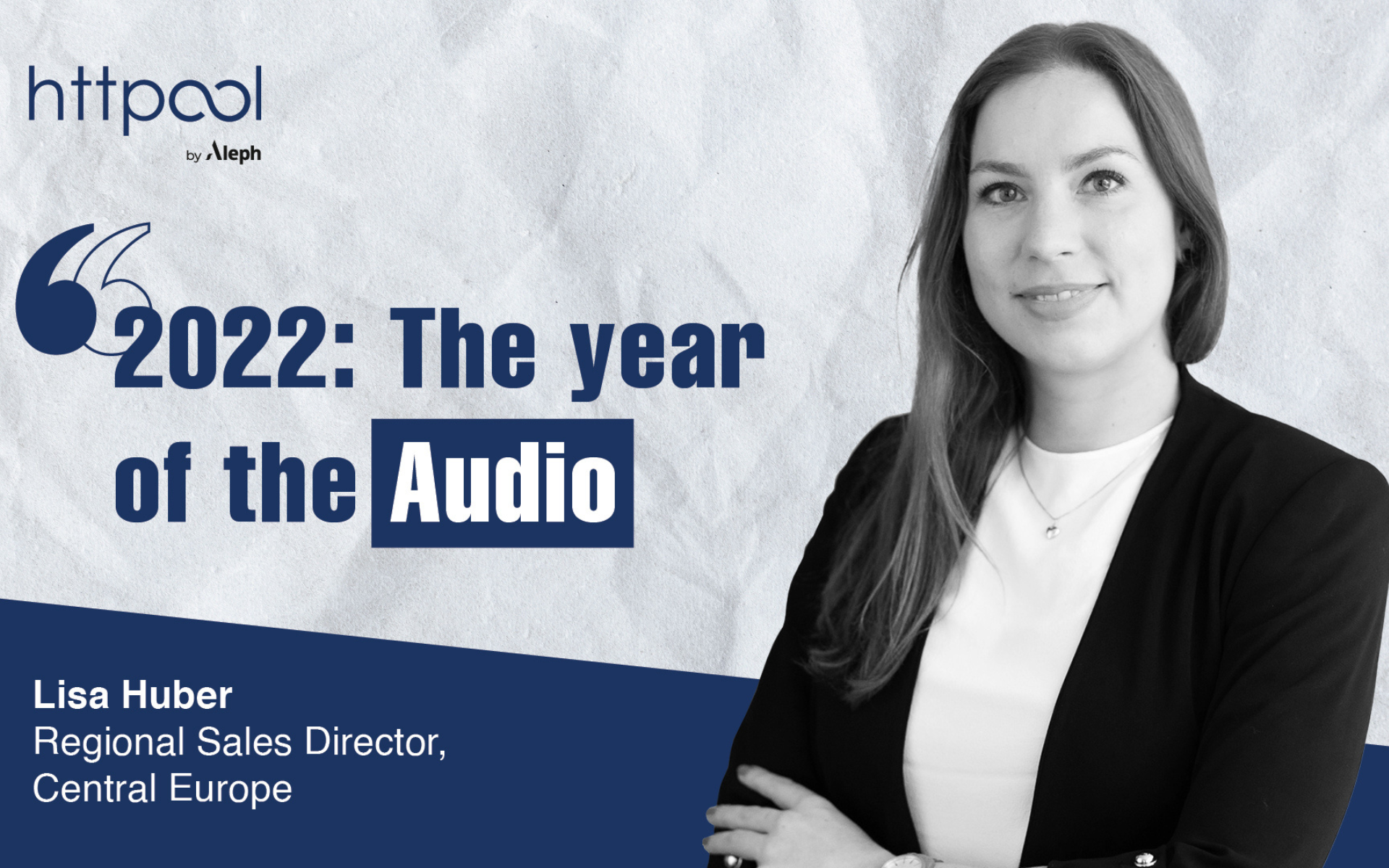
Lisa Huber, Regional Sales Director, Central Europe talking to Amal Hussein, copywriter
Lisa, where do you see the placement of Audio when It comes to advertising?
Lisa: “Well, it’s no secret that we’ve seen a change in audio consumption over the past few years. With consumers experiencing what feels like a visual overload, on and offline, audio has provided a much-needed escape for us all. This has resulted in the rise of podcasts and music streaming platforms.
For this reason, the demand for audio is increasing with people utilizing it more and more in their daily lives, for example, when communicating with family and friends via audio messaging. One area that you can truly see the importance of audio, is through Clubhouse”.
Ah yes, I was definitely a victim of Clubhouse during the first lockdown!
Lisa: “Haha, I’m sure you weren’t the only one! Afterall, it’s a platform built 100% on audio, and it has already managed to achieve tremendous success, grossing 10 million users worldwide by February 2021. Which very well could have been due to the Lockdown as you mentioned!”.
I really think that streaming intelligence is the peak of audio, with platforms such as Spotify known for their intelligent algorithms, allowing users to consume music based on their individual tastes, and preferences. But Spotify, along with other streaming platforms are constantly learning, adapting, and improving, offering their users a completely personalized experience.
I definitely feel this sudden spark in audio has forced the industry to react, reinventing itself with a spotlight on audio advertising.”
That’s great, now let’s talk about the top 3 trends you think are set to steal the spotlight in 2022
Podcast Advertising
Lisa: “Well, firstly let’s start with Podcast Advertising. With podcast consumption on the rise, you notice that brands are keen to get a piece of the action. Podcasts present the perfect opportunity when it comes to B2B advertising, allowing you to reach potential customers in a business mindset environment, and listening to relevant content. This was not the case before, with audio advertising mainly focused on FMCG brands in a B2C context. But now with podcast advertising, promoting in a business-related environment has never been easier.”
Lisa: “Next I would say it’s Voice Activated Advertising. A trend that is currently in the early stages, but is expected to be here for the long run. Brands will be able to communicate via different devices including Alexa, Siri, Smart Homes, and the list goes on! The future is set for devices to be controlled with audio. Thus, it’s becoming increasingly important for brands to begin developing their own audio branding, to stay ahead of the trend, and master audio advertising.
Let’s not forget music streaming services!
Lisa: “Haha, that as my final one, this medium has already shown to be pivotal to the world of audio advertising, and is one that’s definitely here to stay. While in traditional markets, I think that radio is still being utilized as an important aspect of media strategies, people are moving away from radio with brands diverting their attention to music streaming platforms. 2022 is the time for industries to react, brands that incorporate streaming services into their radio plans, are set to gain incremental reach and stay ahead of the game. Music streaming services are the new baseline for audio advertising, it’s a transition that needs to be made and a simple one at that, by using streaming platforms as an extension to audio spots you already have.
I really believe that audio advertising opens the door to endless opportunities, encouraging increased engagement, and new creative solutions. Take Spotify for example, offering the 3D audio feature, providing high quality advertising through an immersive, dynamic, and sensory audio experience. Users are situated into the story in an authentic virtual listening environment, capturing their attention as they can not only hear the ad, but also feel the message.
I definitely think that for traditional radio, it was important to be loud, or at least louder than your competitors, in order to be heard. I’m sure that the attention span of radio listeners is considered generally lower in comparison to personalized platforms, such as Spotify, in which you’re able to whisper in your audio spot, with users not only hearing but also listening. But now advertisers now have the opportunity to create higher quality quieter audio spots, encouraging creativity with the immersive audio experience. This is an incredible balance of new, fun, and exciting advertising, whilst not disturbing consumers.
Would you say that remaining relevant, bold, and interactive are all top priority?
Lisa: “Definitely! There is a playlist for every possible activity, from morning relaxation and cooking, to epic workouts, and partying. It doesn’t matter what you’re doing, Spotify has the ability to be your constant companion, and based on that data, can deliver incomparable contact-based advertising. For example, let’s pretend you are a sports brand looking to reach some gym bunnies. This offers the perfect opportunity to reach users at the gym, listening to a workout playlist. Reaching relevant users at the right moment, with the right message, is crucial to audio advertising success.
Playful brand engagement is another opportunity for brands to use audio in an exciting way, encouraging an interactive experience with users. This can be done through the creation of brand playlists, providing the user with relevant content, during their day to day life, all whilst ensuring the content is not too sales driven, or overly brand focused, and provides value to the user.
This is very insightful! So let’s cut to the chase, how do you get started?
Lisa: “A very good question. So, implementing audio into your media strategy highly depends on your existing brand strategy. If your brand is already active with audio spots on radio, then the first step would be to implement audio streaming as a radio extension to the plan. For video-based brands that need to show and explain the product, it is advised to stick to your existing strategy and use the Spotify video formats. For those wanting to try something new and creative, start with a branded account, and a branded playlist, to kick start user interaction on the platform.
A lot also depends on the goal and the budget available; the standard procedure would be to use Spotify as a radio extension, using audio spots the company already has, meaning no additional investments are needed. In more innovative markets, where the budgets and campaigns may be bigger, there is an amazing opportunity for contextual advertising, to employ different messages for different users, contingent on time and activity, and this is the true power of Spotify.
So, for the brands just testing the waters, we suggest starting with existing audio spots, using them in several channels to figure out what is best for you. But for the more advanced and experienced brands, with larger budgets available, contextual advertising has every possibility for success.
One thing for certain, is that in 2022 the power of audio ads is undeniable, but like all other new media or tactics, audio advertising needs to be approached holistically, and work in parallel with your existing strategy.
Audio ads should never be understood as a stand-alone strategy; instead, they should be included in the overall digital brand marketing plan. If your company or your brand hasn’t yet started with audio branding, the time is now.
Find your audio USP, highlight what differentiates your brand from competitors, find your specific audio voice, decide on relevant messaging, and get creative!
